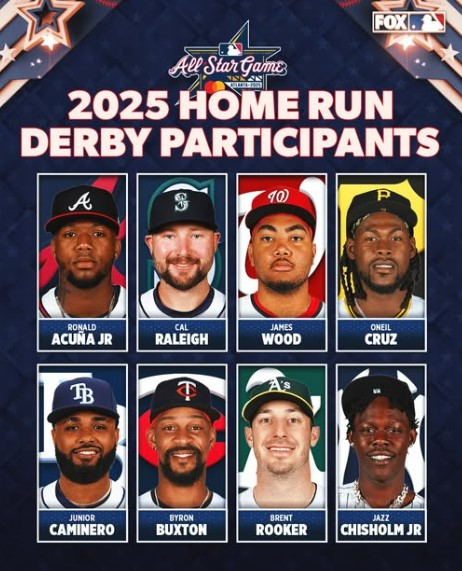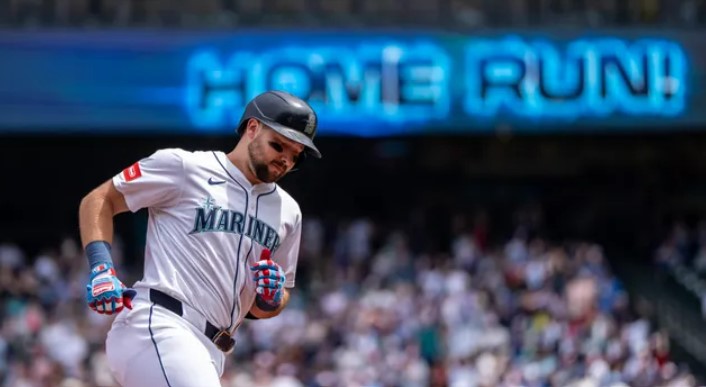When summer is in full swing and baseball fans gather around for the All-Star break, one event reigns supreme in pure spectacle: the Home Run Derby. More than just a power-hitting contest, the Derby has become a cultural phenomenon—where legends are made, records are shattered, and baseball’s brightest stars show off their raw power.
In this post, we take you through the history, format evolution, unforgettable moments, and the larger-than-life players who made the Home Run Derby what it is today: an electrifying celebration of baseball’s most exhilarating play—the home run.
The Origins: Humble Beginnings in 1985
The first official Home Run Derby took place in 1985 at the Hubert H. Humphrey Metrodome in Minnesota. Back then, it was a low-key event compared to today’s fireworks display. The format was simple: each player got two innings to hit as many home runs as possible, with five outs per round.
Held the day before the MLB All-Star Game, it wasn’t even nationally televised at first. But it had all the ingredients of great entertainment: slugging superstars, fan interaction, and towering moonshots. From those humble beginnings, the Derby quickly evolved into must-watch TV.

A Format That Keeps Evolving
As the event grew in popularity, the format underwent multiple changes to keep fans on the edge of their seats.
Early Years (1985–1990s):
- 10 outs per player.
- Traditional batting practice format.
- No time limit; just outs (anything not a home run = an out).
Mid-2000s Adjustments:
- Multiple rounds with cumulative home run totals.
- More players invited (usually 8 participants).
- National League vs. American League themes in some years.
The 2015 Revolution:
MLB introduced a bracket-style, timed format that modernized the event:
- Players face off head-to-head.
- Each player has four minutes per round to hit as many home runs as possible.
- Bonus time awarded for hitting long home runs (usually 440+ feet).
- Tie-breakers include swing-offs and 60-second extra sessions.
This shift injected a faster pace, more drama, and nail-biting finishes, attracting younger audiences and bringing fresh energy to the Derby.
Iconic Home Run Derby Moments
Ken Griffey Jr. (1993, 1998, 1999)
Arguably the most iconic Derby participant, The Kid wore his backward cap and launched majestic shots with that silky smooth lefty swing. He won the event three times and became the face of the Derby for an entire generation.
Josh Hamilton’s 2008 Explosion
Hamilton didn’t even win the Derby that year—but his first-round performance was unforgettable. In front of a stunned Yankee Stadium crowd, he crushed 28 home runs in one round, including a few into the upper deck. It was a once-in-a-lifetime showcase of raw power and stamina.
Vladimir Guerrero Jr. vs. Pete Alonso (2019)
The 2019 Derby gave us arguably the greatest round-for-round battle in Derby history. Vlad Jr. hit 91 total home runs, setting a single-Derby record. Though he didn’t win (Pete Alonso edged him out), Vlad Jr. reminded the world that Derby glory doesn’t always require the trophy.
Julio Rodríguez Lights Up Seattle (2023)
In front of a hometown crowd at T-Mobile Park, Julio Rodríguez put on an electrifying show by hitting 41 home runs in one round, breaking records and igniting a new generation of Mariners fans. Though he fell short in the final, he cemented himself as one of the Derby’s rising stars.
Beyond the Bat Flips: Cultural Impact
The Home Run Derby isn’t just a fun side event—it’s become a defining moment in baseball’s yearly narrative. Here’s why it matters:
1. Global Spotlight
With global MLB coverage, the Derby introduces international audiences to the league’s biggest personalities and talents. Players from Latin America, Japan, and other regions often bring their unique flair, energizing fans worldwide.
2. Player Branding
The Derby is a showcase for charisma, style, and swagger. From custom cleats to family interactions and post-swing celebrations, it lets players market themselves beyond statistics—turning them into household names.
3. Youth Engagement
In an era where MLB competes with the NFL, NBA, and streaming culture, the Derby is one of its most youth-friendly events. Timed rounds, booming music, social media highlights, and fan voting bring younger viewers into the fold.
The Modern Derby: A Perfect Baseball Show
Today’s Home Run Derby blends showmanship and skill. It’s high-octane entertainment in its purest form:
- The timed format adds urgency.
- Rivalries heat up with each round.
- Every swing has the potential for history.
- Players push their limits—and the limits of physics.
The Derby has even begun incorporating statcast data in real time: exit velocity, launch angle, and projected distance. These analytics create even more appreciation for just how elite these sluggers are.
2025
The 2025 Major League Baseball Home Run Derby took place on Monday, July 14, 2025, at Truist Park in Atlanta, Georgia, the home of the Atlanta Braves. It served as the traditional prelude to the MLB All-Star Game, which was held the following day. This marked the 31st and final time the event aired on ESPN.
Winner:
The champion of the 2025 Home Run Derby was Cal Raleigh of the Seattle Mariners. He defeated Junior Caminero of the Tampa Bay Rays in the final round with a score of 18-15. Raleigh’s impressive performance included hitting a total of 54 home runs throughout the competition. He entered the Derby as a betting favorite, boasting an American League record of 38 first-half home runs.
Participants:
The field of eight sluggers included a mix of rising stars and established power hitters:
- Cal Raleigh (Seattle Mariners) – The eventual winner, leading all participants with 38 first-half home runs.
- Junior Caminero (Tampa Bay Rays) – Reached the finals.
- Oneil Cruz (Pittsburgh Pirates)
- Byron Buxton (Minnesota Twins)
- Brent Rooker (Oakland Athletics)
- James Wood (Washington Nationals)
- Matt Olson (Atlanta Braves) – A hometown participant, replacing Ronald Acuña Jr.
- Jazz Chisholm Jr. (New York Yankees)
Notably, several prominent sluggers, including previous champions like Pete Alonso and Vladimir Guerrero Jr., along with stars like Shohei Ohtani and Elly De La Cruz, opted not to participate this year.
Format:
The 2025 Home Run Derby followed a three-round, bracket-style format:
- Round One: All eight hitters participated. Each player had three minutes or 40 pitches, whichever came first, to hit as many home runs as possible. After the timed period, a bonus round allowed players to hit until they recorded three “outs” (any non-homer batted ball). If a player hit a home run of at least 425 feet during the timed round, they earned an additional out for the bonus period. Ties in this round were broken by the longest home run hit. The top four hitters advanced.
- Semifinals: The four advancing players were seeded based on their first-round home run totals (1 vs. 4, 2 vs. 3). In this round, the time limit was reduced to two minutes or 27 pitches.
- Finals: The winners of the two semifinal matchups competed under the same rules as the semifinals (two minutes or 27 pitches). The player with the most home runs in this round was crowned the champion.

